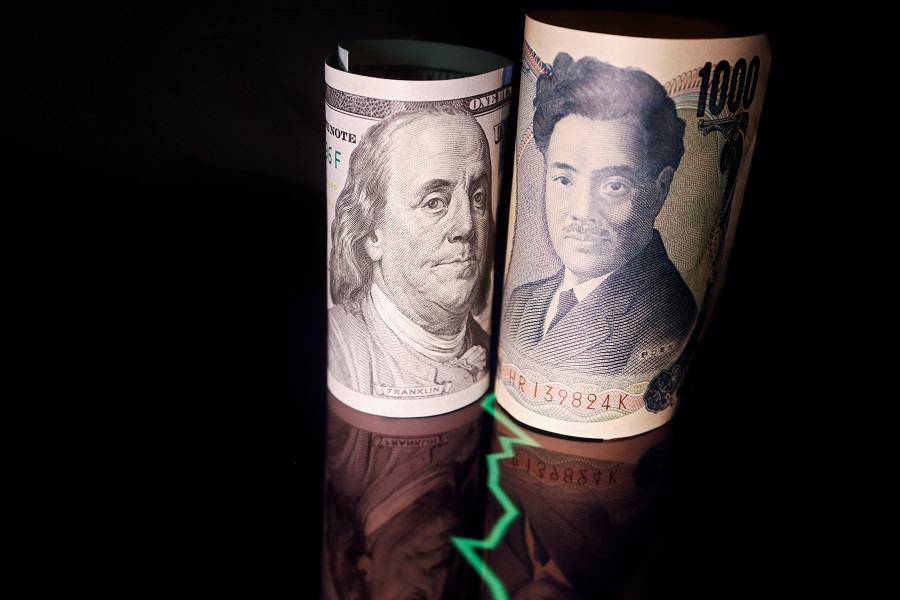
The dollar flirted with a two-year peak on Thursday after the Federal Reserve signalled a slower pace of rate cuts in 2025, while the yen blipped lower after the Bank of Japan (BOJ) stood pat on rates.
The BOJ kept interest rates steady on Thursday as expected, underscoring policymakers' preference to spend more time scrutinising whether wage hikes will broaden and keep inflation durably around its 2% target.
The yen fell in the immediate aftermath of the decision, weakening roughly 0.3% against the dollar to a one-month low of 155.28, before paring some of those losses.
The Japanese currency last traded 0.15% lower at 155.04 per dollar.
"So far, it's no surprise here, but I guess yesterday's FOMC result put the BOJ sort of in a corner where the BOJ cannot be too dovish so that they can keep the yen from falling. At the same time, actually they cannot be too hawkish either," said Naka Matsuzawa, chief strategist at Nomura Securities in Tokyo.
The BOJ would not want to exacerbate current uncertainties in global markets, like they did in July, he said, referring to an episode when BOJ hawkishness sparked a sell-off in yen-funded trades. "So, putting off the right hike decision this time was probably the only choice they had now."
A more measured pace of Fed cuts next year is set to keep rate differentials between the U.S. and Japan wide for some time to come and the yen under pressure.
In the broader market, the fallout from a hawkish tilt by the Fed on Wednesday continued to ripple across markets, with moves in currencies particularly pronounced as traders heavily dialed back on easing expectations next year.
The U.S. dollar's rally sent its peers including the Swiss franc, the Canadian dollar and the South Korean won tumbling to milestone lows in early Asia trade on Thursday.
"We think (the) decision marks the start of an extended pause from the FOMC, even if it is a little too early to say this explicitly," said Nick Rees, senior FX market analyst at Monex Europe.
"We now expect U.S. rates to stay on hold, at least through the first half of 2025. If right, then an upward adjustment in market expectations should support dollar upside over the coming months."
The Swissie bottomed at a five-month trough of 0.90215 per dollar, while the Canadian dollar sank to its lowest in over four years at 1.44655 per U.S. dollar.
The won tumbled to its weakest level in 15 years, while the Australian and New Zealand dollars similarly fell to more than two-year lows.
In stark contrast, the dollar index steadied at 108.05, near Thursday's two-year top of 108.27.
Fed Chair Jerome Powell said more reductions in borrowing costs now hinge on further progress in lowering stubbornly high inflation, with his explicit – and repeated – references to the need for caution from here on that also sent global stocks plunging and yields spiking.
The Bank of England (BoE) also announces its policy decision later on Thursday, where it is expected to stand pat on rates.
Ahead of the outcome, sterling was pinned near a three-week low at $1.25875. The euro meanwhile rose 0.23% to $1.0376, nursing its steep 1.34% drop in the previous session.
Down Under, the Aussie bottomed at $0.6199, before rebounding slightly to last trade 0.11% higher at $0.6225.
The New Zealand dollar also hit its weakest level since October 2022 at $0.5608 and last bought $0.5623.
The kiwi was further pressured by data on Thursday that showed New Zealand's economy sank into recession in the third quarter, cementing the case for more aggressive rate cuts.
